It's been about three weeks since my last update on the Audio Note UK Oto Phono SE Signature Integrated Amplifier (HERE), and it has undergone some rather serious transformation in musicality & sonics over those three weeks of additional run-in time, as I have alluded to briefly in some other posts.
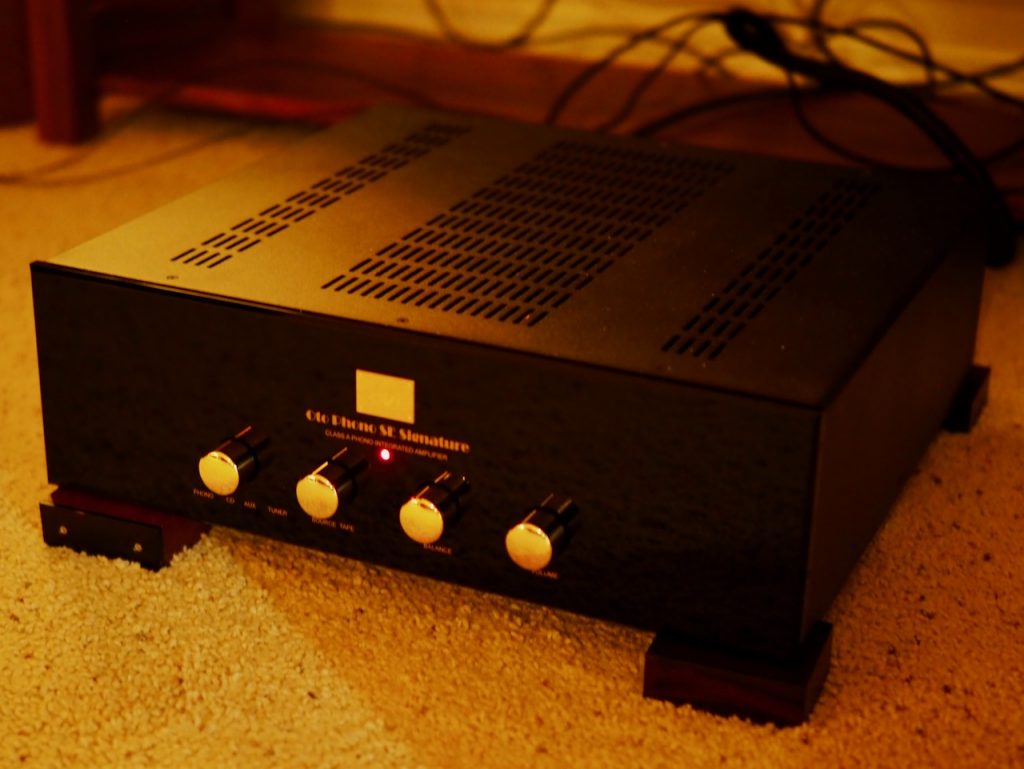
Audio Note UK Oto Phono SE Signature Integrated Amplifier
So tonight I thought I'd sit down and write down a few observations for you of what has happened from the start of run-in, and what's happened in the last three weeks.
I've actually lost track of the amount of run-in time, but a guesstimate would be that since it arrived about 10 weeks ago (HERE), that I've got somewhere north of 300 hours on it, probably around 400 hours or so.
When I first started listening to the Oto on my vintage Altec 832A Corona loudspeakers in my bedroom system, it sounded a little bit bright and forward, but otherwise very nice in terms of sonics and musicality.
As it accumulated run-in time the Oto smoothed out and became less bright and forward, and around 150 to 200 hours - the amount of run-in time suggested by Audio Note UK - I thought it was ready to move into my main music listening system in my living room.
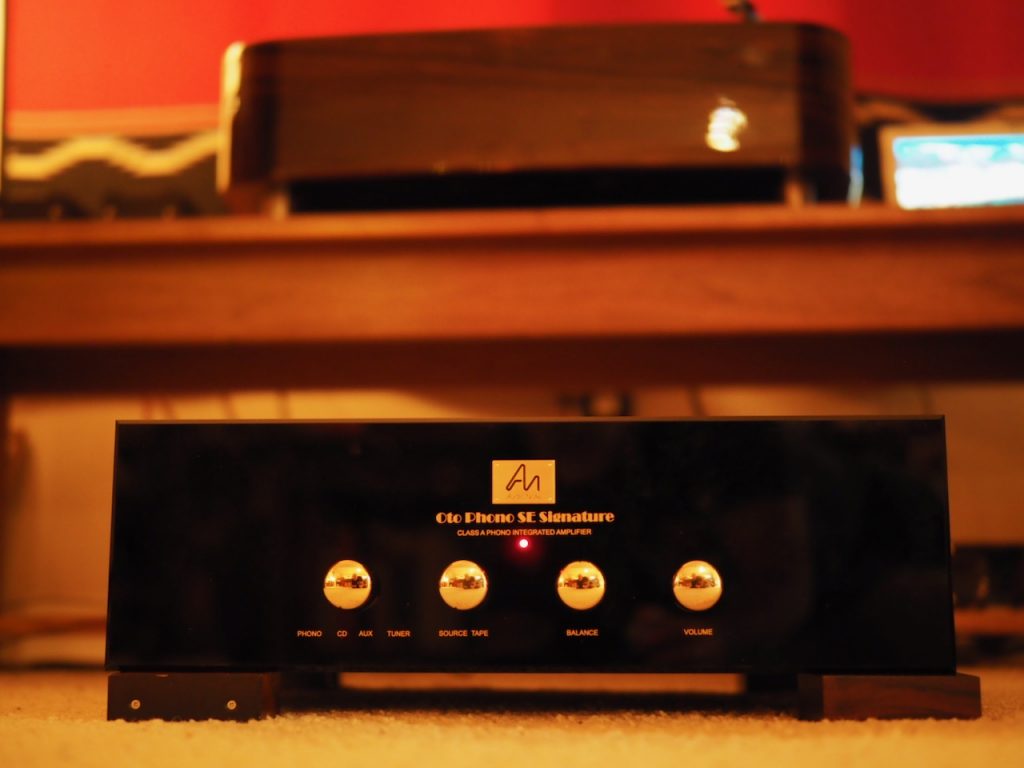
Audio Note UK Oto Phono SE Signature Integrated Amplifier
The Duelund-Altec Project "Stokowski" Altec's with their Duelund CAST tinned-copper crossovers are mind-blowingly good, and they seem to bring the best out of every piece of audio gear I try with them, including the Audio Note UK Oto Phono SE Signature Integrated Amplifier.
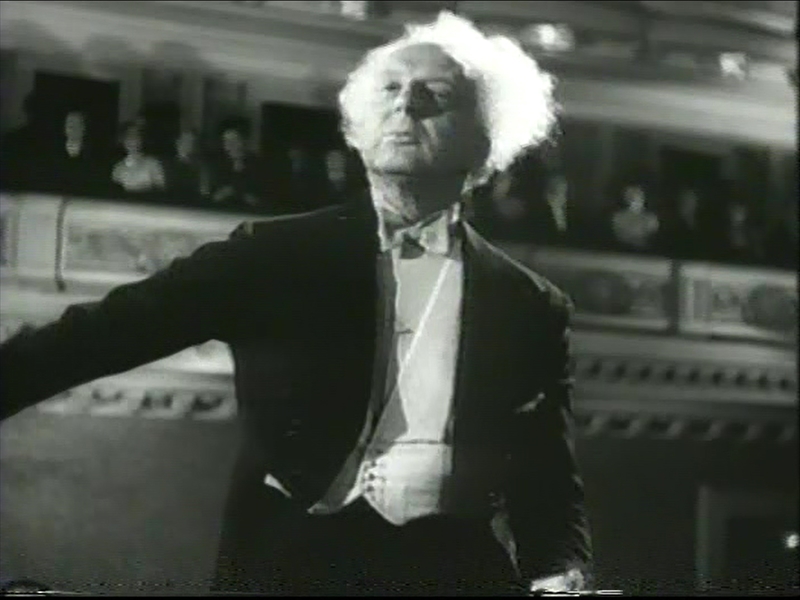
Leopold Stokowski at Carnegie Hall 1947 (public domain photo)
The "Stokowski" Altec's were custom built loudspeakers for Dr. Leopold Stokowski (April 18, 1882 – September 13, 1977), during the time he lived in New York and was conducting the American Symphony Orchestra.
Leopold Stokowski worked closely with recording engineers during the acoustic horn recording era (1917-1924), the electrical recording era (1925-1940), and the "modern" analog recording era until his death (1941-1977), always striving for improved fidelity of recorded music. He heard it all.
Leopold Stokowski was very involved in advancing the recording and playback of music and worked closely with audio engineers from Altec Lansing, Bell Labs, Disney, RCA, and others, to advance the recording arts for records, film, and radio broadcast.
Leopold Stokowski loved experimenting with recording and playback technology and was involved in the development of multi-track recording used in some of the first stereo recordings.
He also collaborated with RCA in the use of a multi-track film recorder for the movie 100 Men and a Girl, in which Stokowski played a speaking part, and also with the Fantasound multichannel sound system developed by RCA and Disney engineers for the famous animated movie Fantasia.
So, have you ever wondered what a famous conductor like Dr. Leopold Stokowski—who was not only a brilliant conductor and musician, but was involved in every aspect of research and development advancements in film, recording, and the audio arts during their peak performance advancement periods—would build as his own ultimate loudspeakers for his personal home listening?
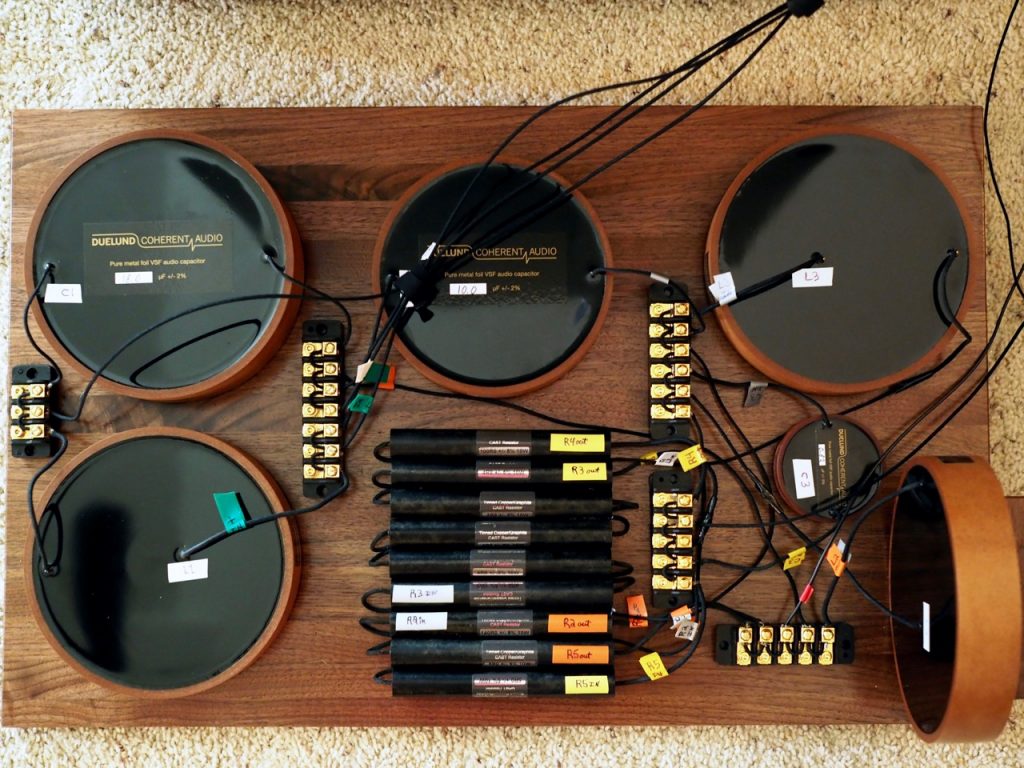
A Duelund CAST Sn-Cu crossover.
Well, you are looking at them in the accompanying photos.
Frederik and I actually one-upped the famous conductor by building what are likely the finest interpretation of a pair of Hiraga-inspired crossovers ever built, utilizing a full complement of custom Duelund CAST tinned-copper components.
These Altec loudspeakers were probably built for Dr. Stokowski during the period when their drivers were produced—1961 to 1964—which would put them at 58 to 55 years old now.

A Duelund CAST Sn-Cu crossover installed into a "Stokowski" Altec loudspeaker.
In fact listening to the Audio Note UK Oto Phono SE Signature Integrated Amplifier with the Duelund-ized "Stokowski" Altec's has become a "desert island" kind of system for me because of its extremely engaging musical & sonic performance, and its relative simplicity, which I love. Their combined performance is stunning.
In fact, legendary mastering engineer, and man of many talents, Steve Hoffman, weighed in on an earlier post of mine about the Oto and said, "I use an Audio Note (UK) Ltd Oto Phono SE Signature in my studio. It's amazing, especially for the money, a really nice EL-84 unit that does it all." and "The OTO has everything I need in the studio, phono section, tape/EQ loop, everything."
I thought it was really cool for Steve to weigh in with his impressions of the Oto, and I completely get what Steve means, the Oto is amazing with the "Stokowski" Altec's.

"Stokowski" Altec's with the Oto.
But I'm getting ahead of myself, so let me back up for a moment and tell you about the rest of the equipment is in the system, and then go into the transformation of the Oto since I put it into my "Stokowski" Altec loudspeaker based system.
I'm using my usual CTC Garrard 301 turntable for a vinyl source, and my LP playback has been almost exclusively through the Soundsmith Zephyr Mk III phono cartridge & Schick tonearm combination, which I can plug straight into the Oto because of the high-output of the Zephyr Mk III.
For digital I stream mostly Jazz24 from my MacBook via my DIY Art of Tone tinned-copper USB interconnect to my vacuum tube Mhdt Lab Havana USB DAC. The interconnects from the Havana to the Oto are the Duelund Coherent Audio interconnects constructed from the new Duelund plastic-free RCA connectors and Duelund Dual DCA16GA tinned-copper interconnects.
My wall outlets are Acoustic Revive customized Oyaide R-1 outlets fitted with Acoustic Revive CB-1DB Receptacle Base Plates and CFRP-1F Carbon Fiber Outlet Plates. From the wall outlet an Acoustic Revive Absolute Power Cable provides AC to an Acoustic Revive RPT-6 Absolute NCF Power Distributor, which distributes AC to the Mhdt Labs DAC and Audio Note UK Oto Phono SE Signature Integrated Amplifier via Acoustic Revive Absolute Power Cables. My CTC Garrard 301 connects to the Acoustic Revive RPT-6 Absolute NCF Power Distributor with a combination of an Acoustic Revive RAS-14-TripleC NCF Power Stabilizer and a Furutech G-320Ag-18 power cable.
Other accessories included two Acoustic Revive RWL-3 Acoustic Conditioners for room treatment, Acoustic Revive RR-77 and RR-888 Schumann Ultra Low-Frequency Pulse Generators, and an Acoustic Revive Quartz Under-Board under Acoustic Revive RPT-6 Absolute NCF Power Distributor.
I've got the Audio Note UK Oto Phono SE Signature Integrated Amplifier sitting upon a quad of Acoustic Revive RCI-3 Cable Insulators at the moment, and the Oto connects to the "Stokowski" Altec's with the original Duelund DCA16GA tinned-copper speaker cables with baked oil-soaked cotton insulation, raised off the floor with a suite of Acoustic Revive RCI-3 Cable Insulators.
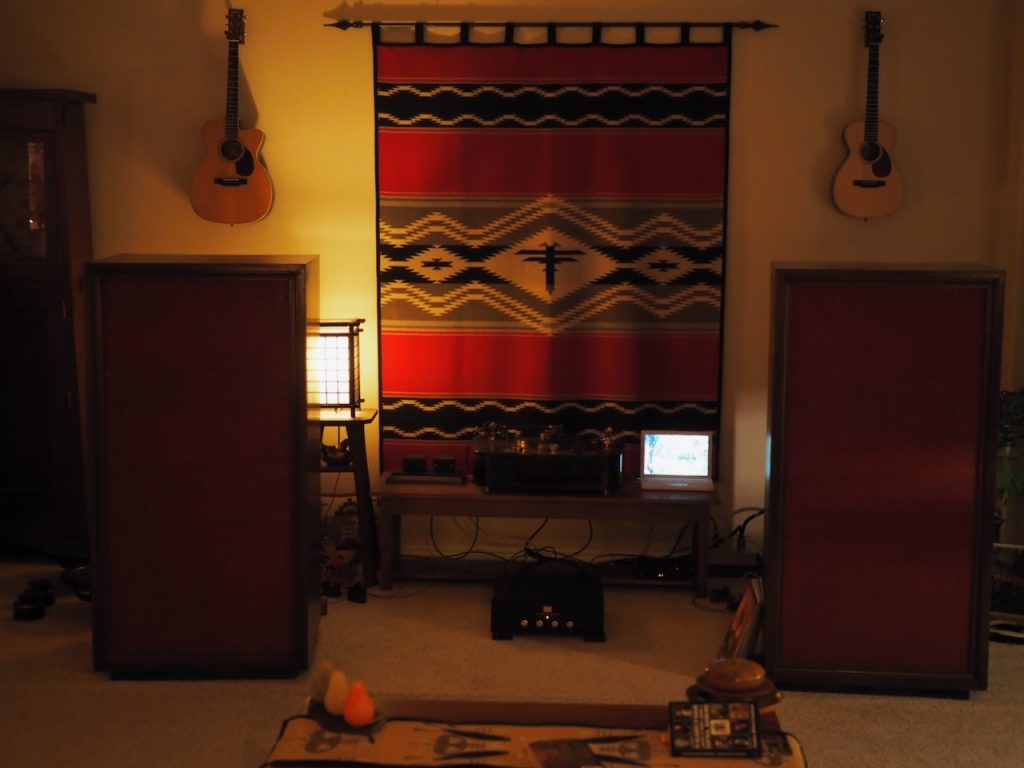
Over the last three weeks and the extra 100 hours or so of run-in time, the Oto has lost all of its initial brightness and forwardness, and like a fine cabernet sauvignon that has been opened up and allowed to breath, the Oto has also really opened up and its musical and sonic flavors have really developed and expressed themselves in impressive ways.
Even streaming Jazz24, listening sessions are full of life and light, with the music taking on the vivid sense of live music being played right in front of me, or what our friend Yazaki-san would call "real sound".
The Oto's sound is very transparent, natural in tonality, full of rich timbral nuance, with live-like dynamics and levels of resolution. There is an engaging sense of tempos, beat, melodies, and harmonies that are truly impressive.
The Oto provides superb musicality, as well as superb audiophile-style sonics, which I'll discuss in more detail in my next post.

CTC Garrard 301
I heard some positive buzz about the long out of print box set called Legendary Masters of Piano, so I picked up a copy to check it out.
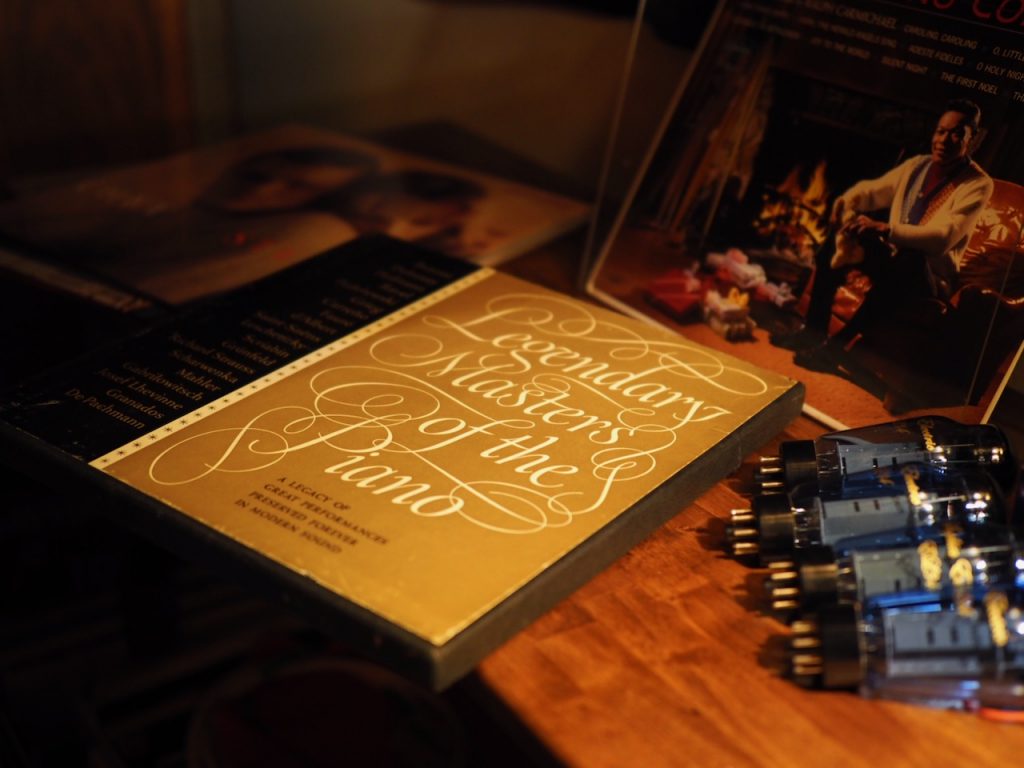
Legendary Masters of the Piano
It features astonishing live performances by twenty great piano masters, including Busoni, Debussy, Hofmann, Ravel, Paderewski, Grieg, Carreño, Fauré, d'Albert, Saint-Saëns, Leschetizky, Scriabin, Grünfeld, Strauus, Scharwenka, Mahler, Gabrilowitsch Lhevinne, Granados, and de Pachmann.
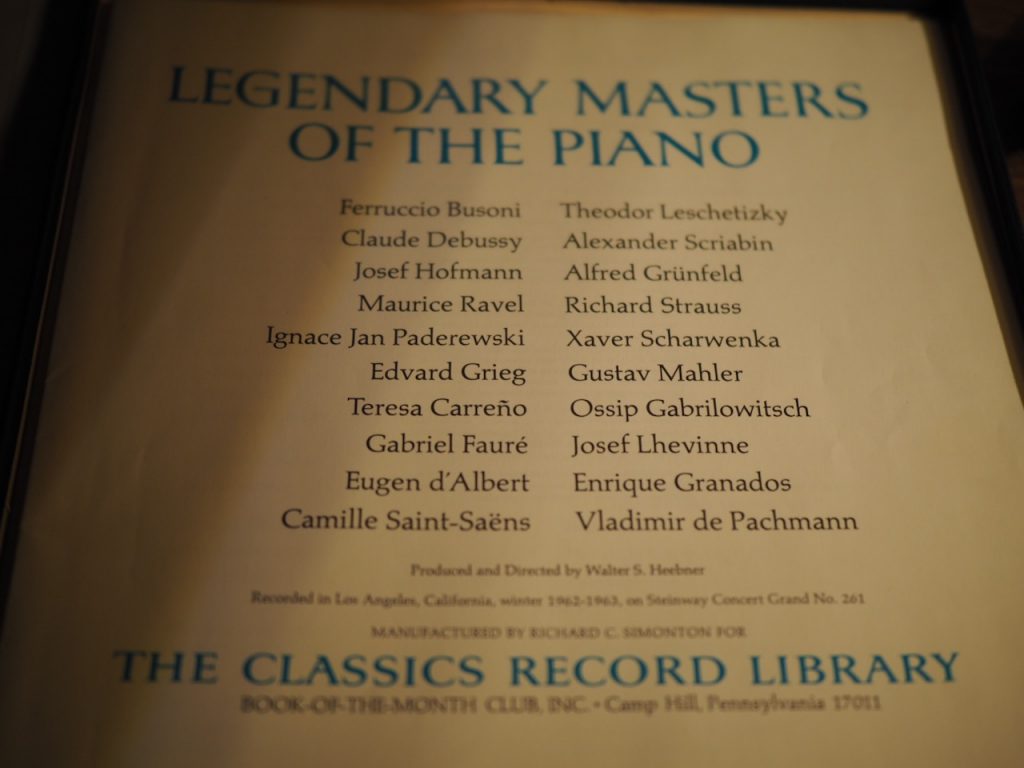
Legendary Masters of the Piano
What! How is that possible? These were recorded circa 1905!
It turns out that Herr Edwin Welte of Freiburg, Germany, developed one of the most amazing recording devices ever constructed, the Welte piano which cleverly recorded everything played on it in astonishing quality, the details about which you can read in box set's accompanying booklet.
Pianist Josef Lhevinne said about it, "I have today, after making a concert tour of the United States, for the first time heard the compositions which I played for Welte reproduced upon the Welte Player with absolute accuracy as to tempo, touch, and tone quality, and with exact gradation of expression. In fact, it reproduces my exact interpretation of the compositions which I played as above noted".
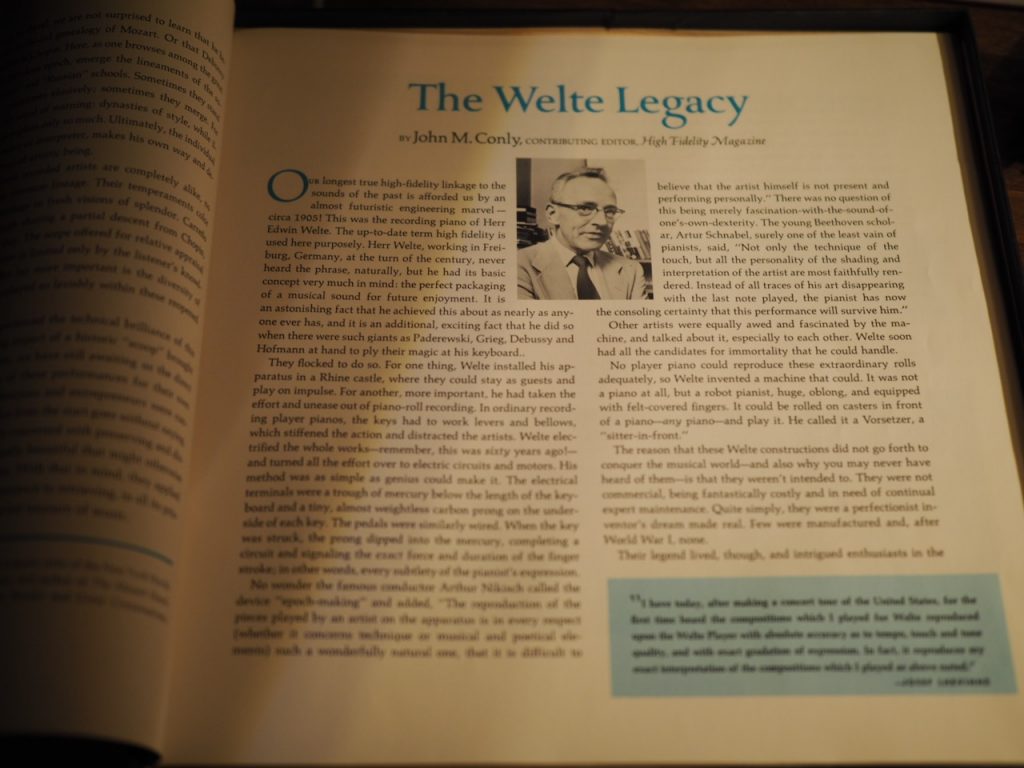
Legendary Masters of the Piano
"... Welte installed his apparatus in a Rhine castle, where they could stay as guests and play on impulse ... such giants as Paderewski, Grieg, Debussy and Hofmann at hand to ply their magic at his keyboard ..."
Word got around about what Welte had accomplished with his piano, and great pianists flocked to the Rhine castle so they could put their hands to the keyboard of the Welte Player.
What you hear on this box set are the compositions they actually played on the Welte Player, and they are stunning.
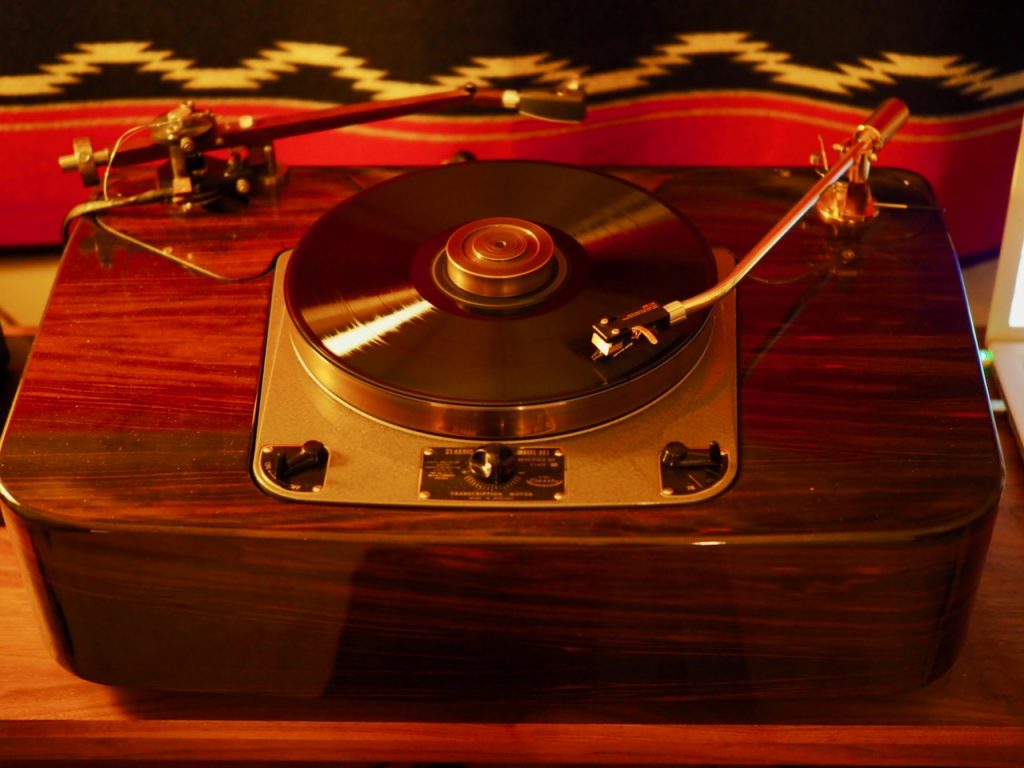
CTC Garrard 301
Have you ever heard a grand piano in your living room played by a great pianist?
I have, well not in my living room, but in my friend Ron Barbee's living room, with his wife, Sumie, playing compositions not unlike what's on Legendary Masters of the Piano, and well, with the Oto providing the juice, that's what it sounded like listening to Legendary Masters of the Piano in my living room over the "Stokowski" Altec's.
Simply amazing! The price of this glorious box set, the Legendary Masters of the Piano, start at about $7 USD on Discogs in "near mint" condition. Truly an unheralded gem!
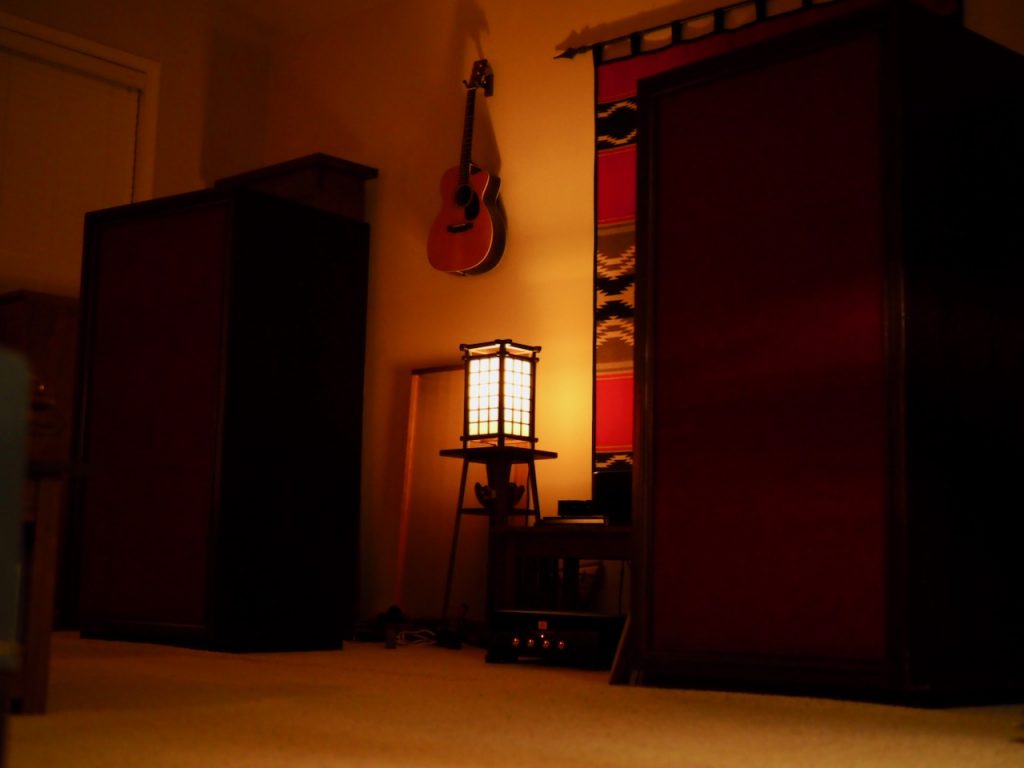
Altec's and Oto
By the way, the Oto's phono stage is superb, and I'll tell you more about why it is so good in a future post. It is no ordinary phono stage, far from it, it is something special.
Here's the deal, simply put, the level of emotional engagement and musical involvement the Oto provides in combination with the "Stokowski" Altec's - whether from analog or digital - is unparalleled in my over six decades of listening to music.
The Oto is amazing, just like legendary mastering engineer, Steve Hoffman, said.
The Audio Note UK Oto Phono SE Signature Integrated Amplifier in combination with the Duelund-ized "Stokowski" Altec's has become my "desert island" system that I just can't get enough of when listening to music.

Audio Note UK Oto Phono SE Signature Integrated Amplifier
If I were to stop fooling around with audio right now, I could be deliriously happy listening to this system for the rest of my life.
Ok that's all for now, and like always, thanks for stopping by, and may the tone be with you!





























